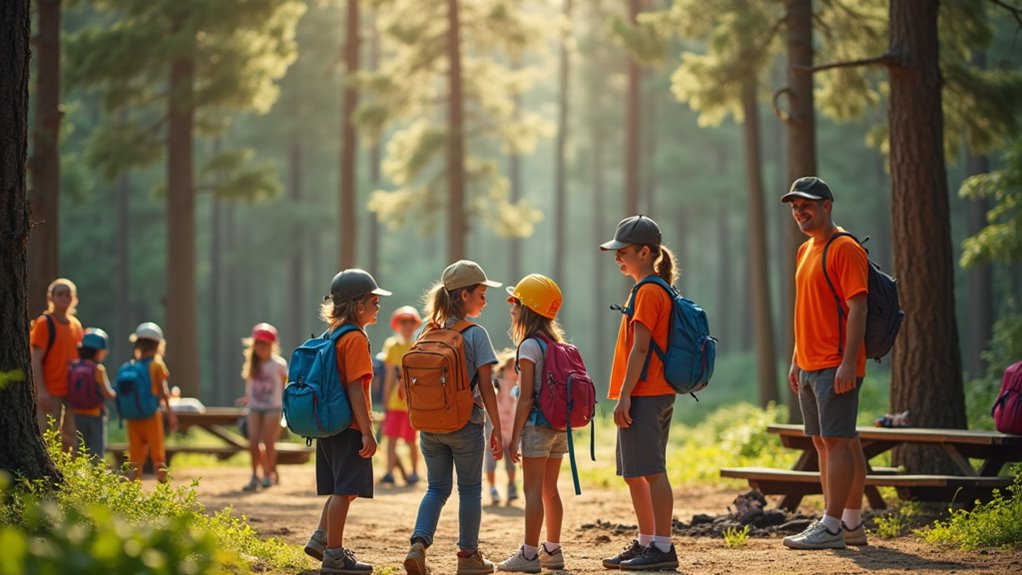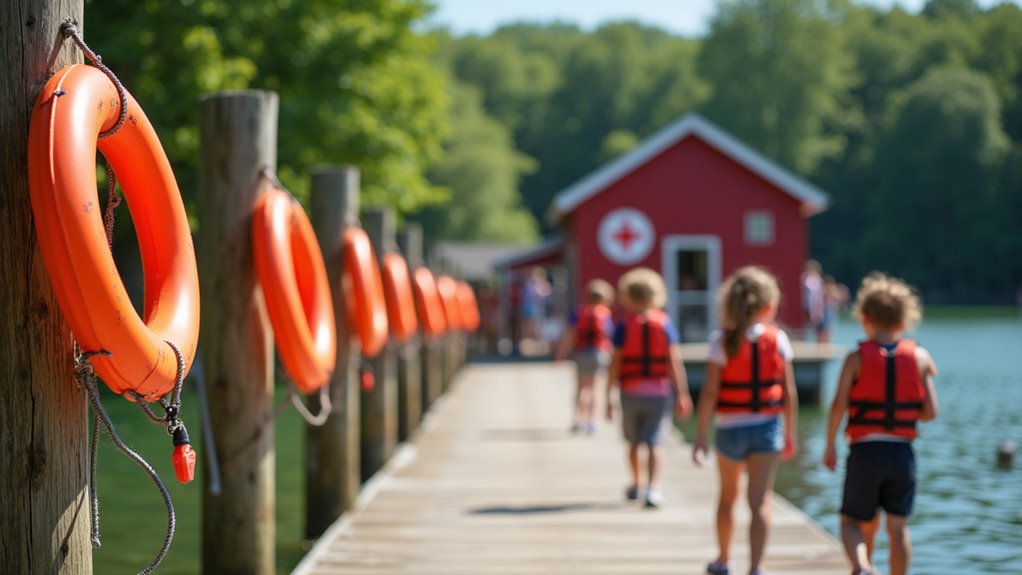Physical Address
304 North Cardinal St.
Dorchester Center, MA 02124
Physical Address
304 North Cardinal St.
Dorchester Center, MA 02124

Finding the right camp could mean the difference between your child's best summer ever and a parent's worst nightmare.
Last summer, twelve-year-old Emma returned from camp with a broken wrist that her parents knew nothing about until pickup day. You’re probably wondering how that’s even possible—and you should be. When you’re evaluating camps for your child, safety protocols aren’t just nice-to-have extras; they’re absolute necessities that separate professional operations from potential disasters. Here’s what you need to know before you sign on that dotted line.

When you’re choosing a summer camp for your child, safety should be your top priority—and that means looking beyond glossy brochures to examine the camp’s actual safety protocols and emergency procedures.
Ask about staff-to-camper ratios and whether counselors hold current CPR and first aid certifications. Request details about their medical facilities—is there a nurse on-site, and how do they handle emergencies requiring hospital transport?
Verify that counselors are CPR-certified and ask whether medical staff remain on-site during camp hours.
Inquire about background checks for all staff members and their screening processes. Check if they maintain updated emergency contact lists and communication systems to reach parents quickly.
Don’t hesitate to ask about their evacuation plans for severe weather, their protocols for lost campers, and how they secure the campgrounds. A reputable camp will gladly share these safety measures with prospective families.
Plus, consider reviewing camping tips that emphasize safety preparedness to better understand what comprehensive safety planning should look like in any camping environment.
Beyond knowing a camp’s emergency procedures, you’ll want to scrutinize who’s actually working with your child day-to-day. Ask directly about staff background checks – thorough screenings should include criminal history, sex offender registries, and reference verification. Don’t accept vague answers; reputable camps will proudly detail their screening process.
Examine staff qualifications beyond background checks. Look for counselors with relevant experience, certifications in CPR and first aid, and specialized training in child development or recreation. Many quality camps require ongoing staff training throughout the season.
Investigate staff-to-camper ratios, which vary by age group and activity type. Younger children need more supervision. Also, confirm that camp directors and key personnel have extensive youth program experience. You’re trusting these individuals with your child’s safety and development – their credentials matter immensely.
Just as you would research the perfect camping style for yourself, take time to thoroughly evaluate different camps to ensure the best fit for your child’s needs and interests.

How does a camp approach your child’s growth and development? You’ll want to understand their core philosophy before enrolling. Some camps emphasize structured learning with scheduled activities, while others promote free exploration and child-led discovery. Ask about their balance between instruction and independent play.
Look for camps that align with your values. If you prioritize academic enrichment, seek programs with educational components. If social-emotional development matters most, find camps focusing on teamwork and communication skills.
Pay attention to how they handle different learning styles. Quality camps adapt their approach for visual, auditory, and kinesthetic learners. They’ll also explain how they manage mixed-age groups and accommodate varying skill levels.
Don’t forget to ask about their conflict resolution methods and discipline policies. These reveal their true educational philosophy.
For families seeking outdoor adventure experiences, consider camps located in scenic destinations like Alpine, Wyoming where children can engage with nature while developing independence and outdoor skills.
Since your child’s enthusiasm directly impacts their camp experience, you’ll want to find programs that spark their genuine curiosity. Start by identifying what naturally excites them—whether it’s building with LEGOs, creating art, exploring nature, or playing sports.
Look for camps that offer depth rather than surface-level activities. A STEM camp should provide hands-on experiments, not just worksheets. Arts camps should offer various mediums like painting, sculpture, and digital design. Sports camps should teach skills while keeping fun as the priority.
Don’t overlook your child’s learning style either. Kinesthetic learners thrive in movement-based activities, while visual learners excel with crafts and building projects. Ask camp directors about daily schedules and how they accommodate different interests within their program structure.
For adventurous children who love outdoor challenges, consider specialty camps that offer unique experiences like glacier climbing, which can provide unforgettable wilderness adventures on some of the country’s most spectacular trails.

When evaluating camp costs, you’ll need to look beyond the advertised weekly fee to understand the true investment. Many camps charge extra for lunches, field trips, specialized activities, and equipment. Ask for a complete breakdown of additional fees upfront.
Consider cost-per-hour compared to other childcare options. A $300 weekly camp providing 40 hours of supervised activities costs $7.50 per hour—often less than babysitting rates.
Evaluate what’s included: qualified staff ratios, safety certifications, insurance coverage, and program quality. Cheaper camps might cut corners on supervision or activities.
Factor in transportation costs if you’re driving daily versus camps offering bus service. Some employers offer dependent care assistance that can offset camp expenses, so check your benefits package before making final decisions.
Similar to deciding whether to rent or buy a boat for occasional use, weigh the long-term value of camp investments against your family’s specific needs and frequency of use.
You’ll want to trust your parental instincts when making this investment in your child’s summer adventure. Don’t let budget constraints cloud your judgment—cutting corners on safety isn’t worth the savings. Take time to visit potential camps, ask the tough questions, and observe how staff interact with children. Your little one’s wellbeing hangs in the balance, so choose a place where they’ll flourish under watchful eyes while spreading their wings.